While rear seatbelts are crucial safety features in any vehicle, their mounting design can sometimes create unexpected problems for passengers.
Poorly positioned belt anchors, awkward retractor mechanisms, or intrusive mounting points can significantly impact passenger comfort, reduce usable space, and even make buckling up more difficult than necessary.
This is particularly problematic for families with children in car seats, elderly passengers with mobility concerns, or anyone needing to maximize interior space.
Some manufacturers prioritize design aesthetics or manufacturing simplicity over ergonomics, resulting in seatbelt systems that protrude into seating areas, create uncomfortable pressure points, or become obstacles when entering and exiting the vehicle.
As vehicles evolve toward more versatile interiors with fold-flat seats and reconfigurable spaces, these design flaws become increasingly frustrating for owners.
In this comprehensive analysis, we examine ten notable vehicles whose rear seatbelt mounting designs have been frequent sources of complaints among owners and automotive reviewers alike.
From luxury SUVs to compact economy cars, these examples demonstrate how even well-regarded vehicles can have significant ergonomic shortcomings when it comes to something as fundamental as seatbelt placement.
1. Toyota Highlander (Third Generation, 2014-2019)
The third-generation Toyota Highlander, while popular for its reliability and family-friendly features, has a notable design flaw in its third-row seatbelt configuration that consistently frustrates owners
The issue centers around the shoulder belt anchor points, which Toyota positioned in the SUV’s ceiling rather than integrating them directly into the seatbacks.
This design choice results in long, diagonal belt paths that cut across the entire cabin width when extended, creating a web-like obstacle that passengers must navigate when entering or exiting the third row.
This ceiling-mounted system becomes particularly problematic during everyday usage scenarios. Parents helping children buckle up must reach across the entire third row to grab belts that retract high into the headliner when not in use.
For shorter passengers or those with limited mobility, simply accessing these belts independently becomes a challenge. The design also impacts cargo flexibility, as the belts often dangle from the ceiling when seats are folded, potentially becoming tangled with cargo or damaged during loading operations.
The issue compounds further with child safety seats. Installing these in the third row requires threading the vehicle’s shoulder belt through the car seat’s routing paths, which becomes awkward with the Highlander’s ceiling-mounted design.

Parents report having to partially climb into the third row and contort themselves uncomfortably just to complete what should be a straightforward safety procedure.
Toyota’s implementation creates additional frustrations during third-row access. When the second-row seats are folded forward to allow entry, the dangling third-row belts often block the pathway or get caught in the folding mechanism.
Passengers frequently report accidentally stepping on or tripping over these belts when entering the vehicle, creating both safety concerns and potential damage to the retractor mechanisms.
Temperature considerations add another dimension to the problem. In hot climates, these ceiling-mounted metal components can become uncomfortably hot when exposed to direct sunlight through the Highlander’s large windows.
Several owner forums document cases of passengers experiencing minor burns from touching these metal parts during the summer months, adding yet another consideration when seating passengers.
While Toyota addressed some of these concerns in the fourth-generation redesign launched in 2020, thousands of third-generation Highlanders remain on roads today with this problematic configuration.
The otherwise excellent family SUV demonstrates how a single ergonomic miscalculation in seatbelt mounting can significantly impact the everyday usability of an otherwise well-designed vehicle.
2. Chevrolet Traverse (First Generation, 2009-2017)
The first-generation Chevrolet Traverse presented a particularly frustrating rear seatbelt mounting design that became the subject of numerous owner complaints throughout its production run.
The primary issue arose from GM’s decision to mount the third-row seatbelt buckles on retractable stalks that recessed into the seat cushion when not in use.
While seemingly innovative in theory allowing for a cleaner appearance when seats were unoccupied this design created substantial practical problems for everyday use.
When passengers attempted to buckle up, they first needed to fish for the recessed buckle, which often disappeared completely between seat cushions.
This design became especially problematic with the typical wear and settling of seat cushions over time, causing the buckles to sink deeper and become increasingly difficult to locate.
Parents consistently reported frustration when trying to help children buckle up, as the process required awkwardly reaching between seat cushions, particularly challenging in low-light conditions or when wearing winter gloves.
The problem extended beyond mere inconvenience into genuine safety concerns. Emergencies requiring quick evacuation would be complicated by these hidden buckles, potentially adding critical seconds to exit times. Additionally, the retractable mechanism itself proved prone to mechanical failures after repeated use.
Owners frequently reported to dealerships that buckles would either fail to extend properly or would no longer retract as designed, creating both a functional problem and aesthetic eyesore as buckles remained permanently protruding from seats.
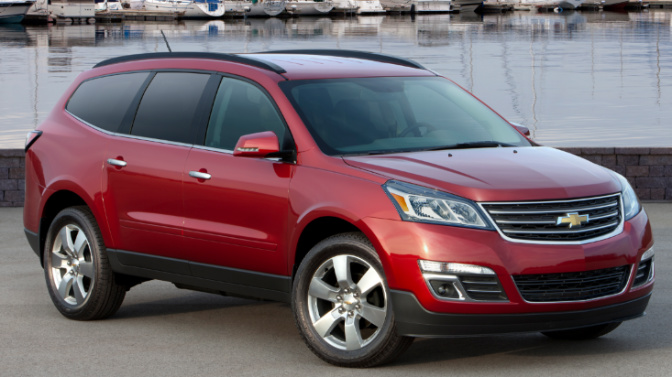
Compounding the issue was the placement of the upper anchor points for the third-row shoulder belts. Rather than integrating these into the vehicle’s C-pillars or seatbacks, Chevrolet positioned them on the interior side panels, creating a diagonal belt path that bisected the already limited entry path to the third row.
Passengers entering the rearmost seats would have to duck under or step over these belts, creating an obstacle course effect that was particularly challenging for elderly passengers or those with mobility limitations.
The mounting location also interfered with the Traverse’s cargo capabilities. When the third-row seats were folded to expand cargo space, the belt assemblies protruded into the load floor area, creating uneven surfaces that could damage cargo or become damaged themselves when heavy items shifted during transit.
Many owners reported snagging clothing or scratching furniture edges on these protruding belt components when loading the vehicle. GM’s engineering team eventually acknowledged these shortcomings, implementing significant improvements to the seatbelt mounting design in the second-generation Traverse launched in 2018.
However, the persistence of this flawed design through nearly a decade of production affected hundreds of thousands of vehicles, demonstrating how seemingly minor ergonomic oversights can significantly impact the daily usability and passenger satisfaction of an otherwise capable family vehicle.
3. Nissan Pathfinder (Fourth Generation, 2013-2020)
The fourth-generation Nissan Pathfinder represented a significant departure from its truck-based predecessors, adopting a crossover platform aimed at family-oriented buyers.
However, this transition brought with it a problematic rear seatbelt mounting configuration that consistently ranked among owners’ top complaints.
The most significant issue centered around the middle seat in the second row, where Nissan implemented an unusual ceiling-mounted seatbelt design that created numerous practical challenges.
Unlike conventional three-point seatbelts anchored to the vehicle’s B-pillar or seat structure, the Pathfinder’s middle belt descended from the ceiling in a manner reminiscent of commercial aircraft safety belts.
This design choice stemmed from Nissan’s desire to facilitate their marketed “EZ Flex” seating system, which allowed the second-row seats to slide forward for third-row access even with child seats installed.
While innovative in concept, this ceiling-mounted belt created a visual and practical obstruction that bisected the interior cabin space when in use.
The implementation posed several functional problems. First, shorter passengers and children struggled to reach the belt when it retracted fully into its ceiling housing.
Parents frequently reported having to stand on the door sill and reach across the vehicle interior just to retrieve the belt for their children. Second, the extended belt created a diagonal barrier across the cabin that interfered with passengers moving between the vehicle’s left and right sides or accessing the third row from the opposite side door.
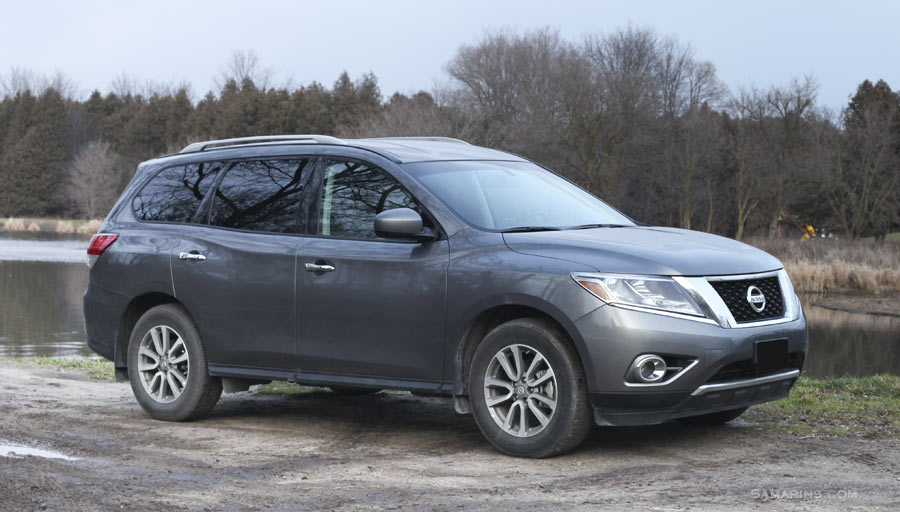
Visibility was another significant concern with this design. The diagonal belt path crossed directly through the driver’s rearward sight line when looking through the interior mirror, creating a persistent visual obstruction.
This became particularly problematic during nighttime driving when the belt would occasionally reflect interior lighting, creating distracting glare for the driver.
The mounting position also complicated child safety seat installation. Parents attempting to secure a car seat in the middle position faced the awkward process of routing a downward-angling belt through traditional car seat belt paths designed for horizontal belt travel.
This often resulted in improper installations or forced parents to abandon the middle position altogether for child seats, negating the safety advantages of the center seating position.
Compounding these issues was the belt’s tendency to twist or tangle when retracted, requiring frequent manual straightening to prevent uncomfortable pressure points for passengers.
During hot weather, the metal components of the ceiling-mounted latch plate would heat up significantly, creating burn risks for unsuspecting passengers reaching for their belts.
While Nissan eventually addressed many of these concerns in the fifth-generation Pathfinder launched in 2021, returning to a more conventional belt mounting design, the previous generation remains common on roads today.
This design misstep serves as a reminder that innovative features must be thoroughly evaluated for their practical implications in daily use scenarios, as even well-intentioned engineering solutions can create unexpected ergonomic challenges that impact the overall ownership experience.
4. BMW X5 (E70 Generation, 2007-2013)
The E70 generation BMW X5 represented the German manufacturer’s evolving vision of luxury SUVs, delivering impressive performance and premium appointments.
However, its rear seatbelt mounting design exhibited notable ergonomic shortcomings that diminished the otherwise refined rear cabin experience.
The primary issue stemmed from BMW’s decision to integrate the outboard rear seatbelt buckles into recessed channels between the seat cushion and backrest rather than mounting them on flexible stalks as found in many competitors.
This recessed mounting design created immediate practical challenges. When passengers entered the vehicle, the buckles would frequently disappear into the gap between seat components, requiring occupants to blindly search for them by feel.
The problem worsened as the vehicle aged and seat cushions compacted through normal use, causing the buckles to sink deeper into their channels.
The positioning also created uncomfortable pressure points against passengers’ hips, particularly noticeable during longer journeys on the otherwise comfortable seats.
BMW’s design choice was particularly problematic for larger passengers. The fixed position of these recessed buckles meant they couldn’t adjust to accommodate different body types, creating situations where the hard plastic buckle housing would press uncomfortably against the occupant’s side.
During spirited driving something the performance-oriented X5 encouraged these fixed buckles could dig into passengers during cornering maneuvers as body weight shifted laterally.
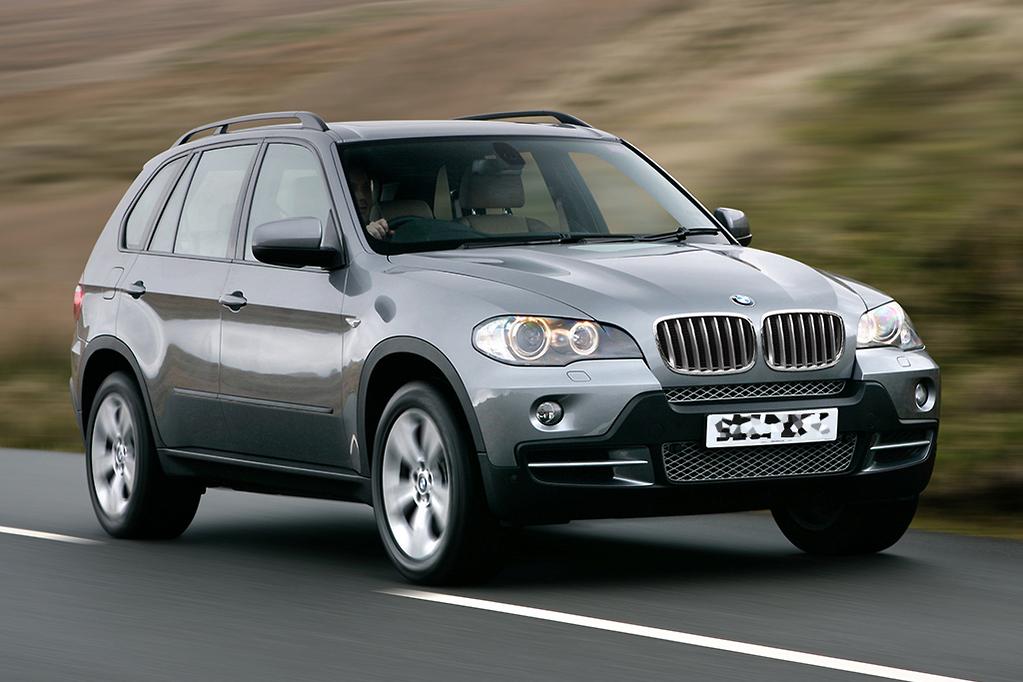
The center rear position presented additional challenges with its unique belt configuration. Rather than a conventional three-point belt, BMW implemented a complex arrangement where the shoulder portion detached completely and stowed in a ceiling-mounted compartment when not in use.
Passengers unfamiliar with this system often struggled to locate and properly assemble the components, creating confusion and delays when buckling up.
The detachable nature of this belt also meant parts would occasionally go missing, rendering the center position unusable until replacement components were sourced.
Child safety seat installation was similarly compromised by these mounting decisions. The recessed buckle positions often interfered with the rigid LATCH connectors found on many car seats, creating installation challenges that sometimes prevented proper securing.
Parents reported having to use considerable force to compress seat cushions just to access the buckles when securing children, an unnecessary complication in what should be a routine safety procedure.
BMW’s premium interior materials ironically contributed to the problem. The soft, supple leather upholstery used in the X5 stretched and shifted more readily than firmer materials would, exacerbating the tendency for buckles to disappear between cushions.
Additionally, the leather’s natural friction against clothing sometimes made extracting seatbelts from their retractors more difficult, requiring passengers to pull with uncomfortable force just to extend enough belt to secure themselves.
While the E70 X5 excelled in many aspects of luxury SUV design, this seemingly minor seatbelt mounting decision demonstrates how fundamental usability features can impact the ownership experience regardless of a vehicle’s premium positioning.
BMW addressed many of these concerns in subsequent generations, but thousands of these vehicles remain on roads today with this ergonomic limitation.
Also Read: 7 SUVs That Allow Full-Height Box Loading With Ample Cargo Space
5. Ford Explorer (Fifth Generation, 2011-2019)
The fifth-generation Ford Explorer marked a significant transition for the nameplate, shifting from a traditional body-on-frame SUV to a unibody crossover design aimed at improving on-road performance and interior space utilization.
Despite this modernization, Ford implemented a problematic rear seatbelt configuration that created persistent ergonomic challenges, particularly in the vehicle’s third row.
The most significant issue involved Ford’s decision to integrate inflatable seatbelts—a novel safety technology with poorly positioned mounting points.
Ford’s inflatable seatbelt technology, marketed as a safety innovation, incorporated miniature airbags within the shoulder belts to distribute crash forces more evenly across passengers’ torsos.
While conceptually advanced, the physical implementation required substantially thicker, stiffer belt webbing and larger retractor mechanisms. These bulkier components demanded more mounting space, leading Ford’s engineers to position the third-row outboard belt anchors in the SUV’s D-pillars rather than integrating them into the seatbacks themselves.
This positioning created immediate practical problems. The belts extended diagonally across the already tight entry path to the third row, forming a webbing barrier that passengers needed to navigate when entering or exiting.
The stiffer, thicker belt material didn’t drape naturally like conventional belts, instead maintaining a semi-rigid position that more aggressively impeded movement through the cabin. Parents helping children buckle into the third row frequently reported catching clothing or limbs on these protruding belts.
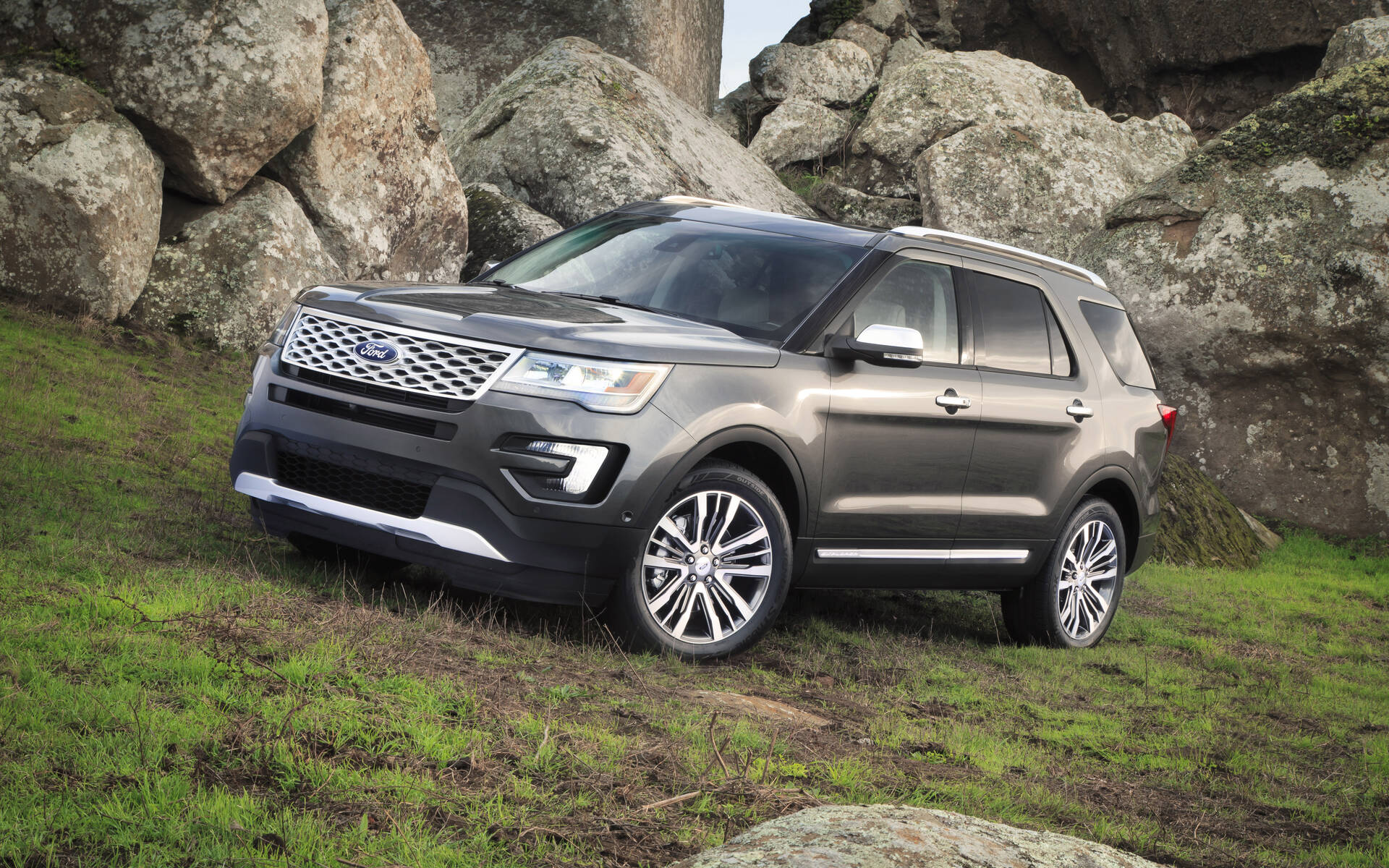
The inflatable technology created additional comfort issues during extended use. The thicker belt material didn’t conform as comfortably to passengers’ bodies, creating pressure points and irritation during longer journeys.
The larger buckle components required for the system also proved more difficult for smaller passengers and children to manipulate independently, reducing self-sufficiency for younger family members.
Installation of child safety seats in the third row became particularly challenging due to this configuration. The rigid belt path and awkward anchor points complicated the process of routing vehicle belts through car seat belt paths an already cumbersome procedure made worse by the Explorer’s design.
Many parents ultimately abandoned third-row car seat installation altogether, diminishing the seven-passenger vehicle’s practical capacity for families with multiple young children.
The mounting position also interfered with the Explorer’s cargo functionality. When the third-row seats were folded flat to expand cargo capacity, the belt assemblies protruded into the load area, creating uneven surfaces and reducing usable space.
The inflatable belts’ thicker retractor mechanisms required larger housing units that claimed additional interior volume compared to conventional systems.
Ford’s implementation particularly impacted the comfort of adult third-row passengers, who already faced the typical space constraints of midsize SUV third rows.
The awkward belt positioning created diagonal pressure across occupants’ torsos from unnatural angles, resulting in uncomfortable rides even on shorter journeys.
Several owner forums documented cases of passengers simply forgoing seatbelt use entirely in the third row due to the discomfort an unfortunate safety compromise stemming directly from the mounting design.
While Ford continued refining the inflatable seatbelt technology throughout this generation’s production run, the fundamental mounting issues remained until the sixth-generation redesign in 2020.
This case illustrates how even well-intentioned safety innovations can create unintended ergonomic consequences when their physical implementation isn’t fully optimized for real-world usage.
6. Dodge Journey (2009-2020)
Throughout its remarkably long production run, the Dodge Journey maintained a problematic rear seatbelt mounting design that consistently frustrated owners, particularly those using the vehicle for its advertised purpose as a family transport.
The most significant issues centered around the second-row seating area, where Fiat Chrysler Automobiles implemented a belt configuration that prioritized manufacturing simplicity over ergonomic functionality, creating daily usability challenges for passengers.
The Journey’s fundamental design flaw involved mounting the second-row outboard seatbelt retractors directly into the lower portion of the B-pillars rather than integrating them into the seat structures themselves.
This positioning created immediate practical problems for entry and exit. The belt webbing extended across the door opening at approximately knee height for many adults, creating an obstacle that passengers needed to step over when entering or exiting the vehicle.
This became particularly problematic for elderly passengers or those with mobility limitations, who frequently reported catching their feet or legs on the belt webbing during entry.
Compounding this issue was the Journey’s “Tilt ‘n Slide” second-row seat design, which allowed the seats to move forward for third-row access in three-row configurations.
When these seats were adjusted forward from their rearmost position, the fixed B-pillar belt mounts created slack in the belt webbing that would often dangle into the entry path or get caught in the seat sliding mechanism.
Owners reported frequent instances of belts becoming pinched in the seat tracks, leading to damaged webbing that required dealer replacement.
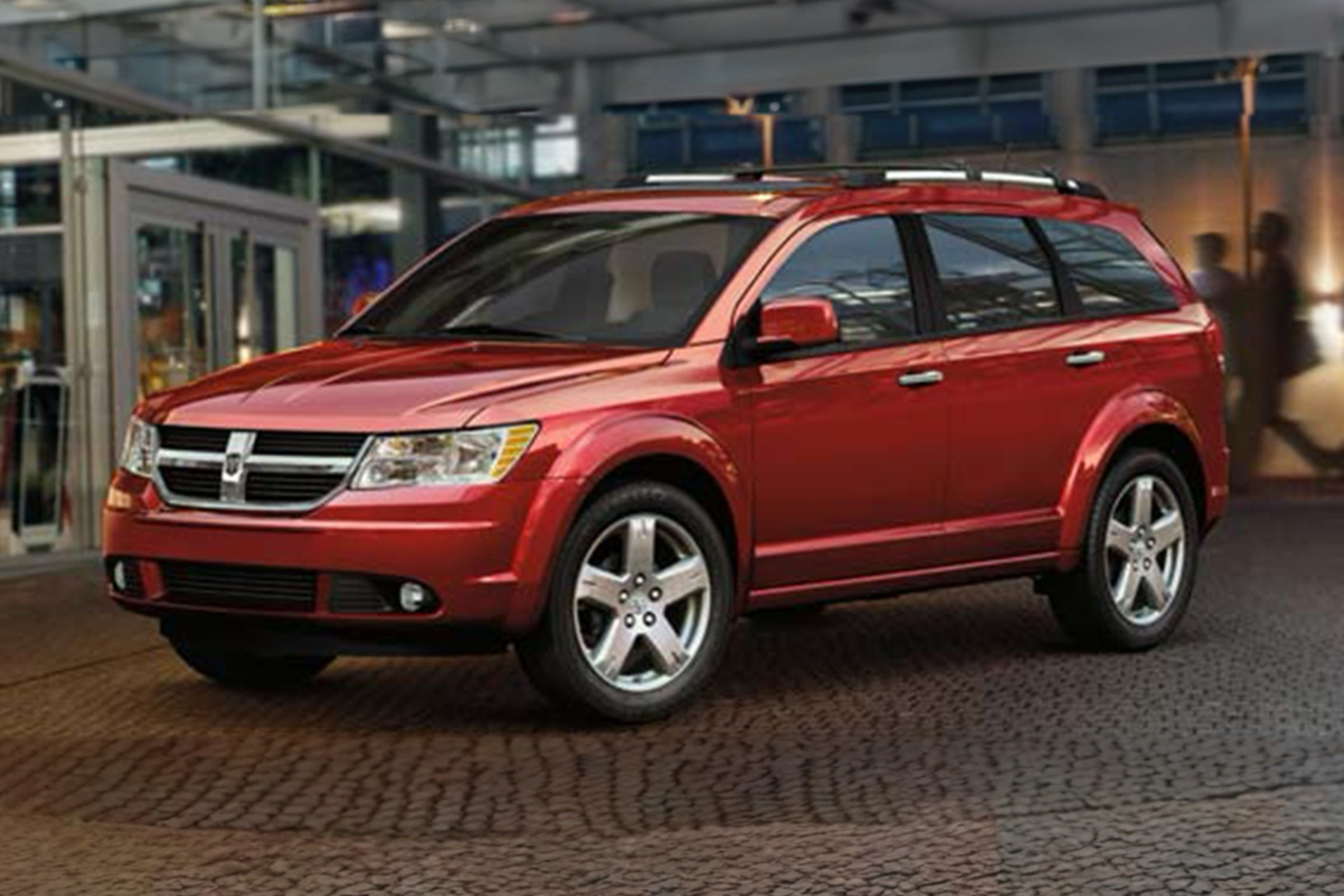
The center seating position in the second row presented its unique challenges. Rather than implementing a dedicated three-point belt, Dodge utilized a detachable shoulder belt that stowed in the ceiling when not in use.
This design required passengers to manually attach the shoulder component to a lap belt before use a process that confused occasional passengers and created delays when buckling up.
The detachable nature of this system meant components would occasionally go missing, rendering the center position unusable until replacement parts were sourced.
Child safety seat installation was particularly compromised by these mounting decisions. Parents attempting to secure car seats in the second row encountered interference between the fixed belt mounts and the rigid LATCH anchors used by most modern car seats.
This often necessitated readjusting already-installed seats to access buckles or required uncomfortable reaching between seat components to secure belts.
The Journey’s relatively narrow second row exacerbated these issues, as child seats positioned outboard would often block access to the center buckle entirely.
The Journey’s budget-focused interior materials contributed to the problem’s persistence. The thin seat padding compressed significantly during normal use, causing buckles to sink between cushions and become difficult to retrieve.
The plastic trim surrounding belt anchor points was prone to cracking or breaking after repeated contact with passengers during entry and exit, creating both aesthetic and potential safety concerns as sharp edges developed.
Despite multiple minor refreshes throughout its production life, Dodge never substantially revised this problematic belt mounting design. As the Journey aged in the marketplace without a fundamental redesign, these ergonomic shortcomings became increasingly apparent compared to more modern competitors.
This case demonstrates how cost-saving design decisions affecting basic safety components can significantly impact the long-term owner experience, particularly in family-oriented vehicles where such features see frequent daily use.
7. Mercedes-Benz GLE Coupe (First Generation, 2015-2019)
The first-generation Mercedes-Benz GLE Coupe exemplified the growing trend of coupe-styled SUVs, prioritizing dramatic exterior design over practical considerations.
While the vehicle impressed with its powerful drivetrain options and premium appointments, its rear seatbelt mounting configuration demonstrated how form-over-function design philosophies can create meaningful ergonomic compromises, even in luxury vehicles commanding premium prices.
The GLE Coupe’s most significant seatbelt-related challenge stemmed directly from its defining styling feature: the aggressively sloped roofline that gave the vehicle its distinctive coupe-like silhouette.
This design choice necessitated positioning the rear seatbelt upper anchors significantly forward from where they would typically be located in a conventional SUV.
The resulting belt path created an uncomfortable diagonal across passengers’ torsos, pulling the belt tight against their necks rather than resting naturally on their shoulders as properly designed three-point belts should.
This compromise was immediately noticeable to rear-seat passengers, who frequently reported the sensation of being slightly choked by their seatbelts, particularly during longer journeys.
The issue affected passengers of all heights but became especially problematic for taller individuals whose shoulder height exceeded the anchor point’s position.
In these cases, the belt would angle upward from the shoulder to the anchor, creating pressure points and discomfort that many owners reported made extended rear-seat travel genuinely unpleasant.

The sloping roofline created additional challenges for the belt retractor mechanisms. With less vertical space available within the vehicle’s C-pillars, Mercedes engineers implemented smaller retractor assemblies that sometimes struggled to maintain consistent tension.
This resulted in belts that either failed to retract properly when unbuckled or applied inconsistent pressure during use. The compromised mounting geometry also meant belts were more prone to twisting during normal extension and retraction, requiring frequent manual straightening to prevent uncomfortable edges from contacting passengers’ necks or shoulders.
Accessing the belts presented another challenge unique to the GLE Coupe’s design. The combination of its high beltline, small rear windows, and sloping roof created dark, visually constrained rear seating areas where belt buckles were difficult to locate, particularly in low-light conditions.
The reduced rear door openings another consequence of the coupe styling, making reaching across to help other passengers buckle up significantly more difficult than in conventional SUVs with similar footprints.
Child safety seat installation suffered particularly under these constraints. The forward-positioned upper anchors created improper belt paths through many car seat models, potentially compromising their effectiveness in crash scenarios.
Parents frequently reported difficulty achieving proper installation angles due to the seat cushion design and belt geometry, forcing many to abandon rear outboard positions for car seats despite these typically being preferred locations.
Mercedes partially acknowledged these shortcomings by making the GLE Coupe’s rear seat a strict two-passenger affair in many markets, eliminating the center position rather than attempting to engineer an adequate belt solution for that location.
This admission that the vehicle’s design couldn’t properly accommodate a full complement of belted passengers highlighted the fundamental compromises created by prioritizing the coupe roofline.
While subsequent generations implemented incremental improvements, the fundamental limitations imposed by the vehicle’s defining design characteristic remained.
The GLE Coupe serves as a prime example of how stylistic priorities can directly impact basic safety equipment functionality, creating daily compromises that contrast sharply with the vehicle’s premium positioning in the marketplace.
8. Mazda CX-9 (First Generation, 2007-2015)
The first-generation Mazda CX-9 earned praise for its engaging driving dynamics and upscale interior appointments that belied its mainstream pricing.
However, beneath its handsome exterior styling lurked a problematic rear seatbelt configuration that created persistent frustrations for owners, particularly those regularly utilizing all three rows of seating.
The issues primarily stemmed from Mazda’s decision to implement a space-saving design that compromised everyday usability in pursuit of interior packaging efficiency.
The most significant problem involved the third-row seatbelt mounting locations. Rather than integrating the outboard belt anchors into the vehicle’s D-pillars or seatbacks themselves, Mazda positioned them on the interior side panels adjacent to the cargo area.
This created a diagonal belt path that crossed directly through the already narrow entry path to the third row. When second-row seats were positioned for adult comfort, these belts effectively created a webbing barrier that third-row passengers needed to duck under or step over when entering or exiting the vehicle.
This design choice was particularly problematic for families with children. Parents attempting to help young children buckle up in the third row needed to maneuver awkwardly through this belt obstacle course while hunched under the CX-9’s sloping roofline.
The positioning made it nearly impossible for front-seat passengers to assist third-row occupants without exiting the vehicle entirely and accessing the third row from the rear liftgate a significant inconvenience during inclement weather.
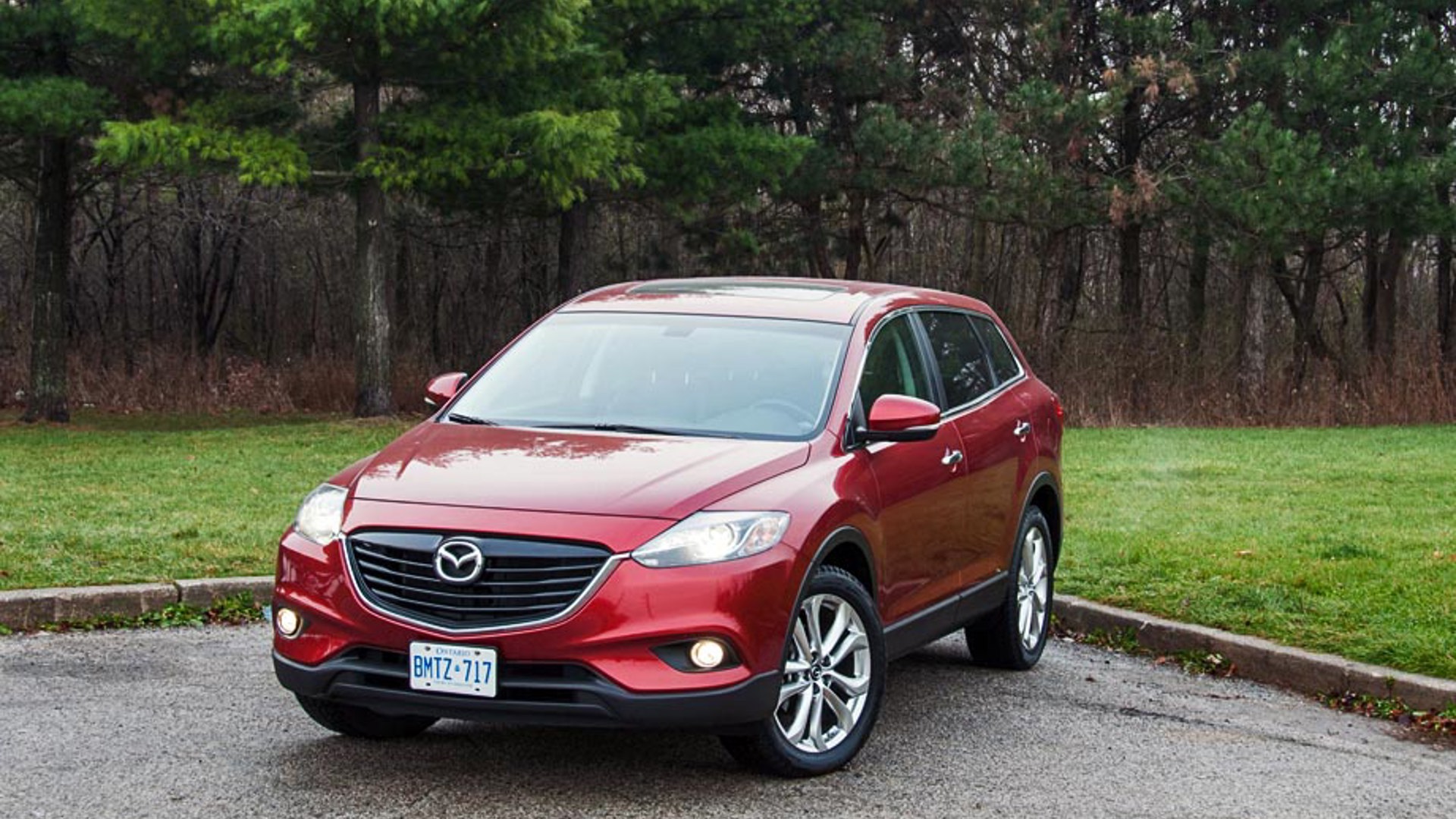
The issue was compounded when the CX-9 was fully occupied. With passengers in all positions, the protruding belts created pressure points and comfort problems where they contacted occupants’ sides or brushed against arms during normal vehicle movement.
The belts’ routing also meant they frequently contacted and occasionally damaged interior trim pieces through normal use, creating premature wear on door panels and seat upholstery.
Cargo functionality suffered similarly from this configuration. When the third-row seats were folded to expand cargo capacity, the belt assemblies protruded into the load floor area, creating uneven surfaces and reducing usable space.
The exposed belt hardware became vulnerable to damage from sliding cargo, and many owners reported bent or broken components after hauling heavier items that shifted during transit.
Mazda’s implementation also created visibility challenges for the driver. The position of the upper anchor points meant that extended belts crossed through portions of the rearward sight line when looking through the interior mirror, creating persistent visual obstructions.
This became especially problematic during nighttime driving, when the belts would occasionally catch interior lighting and create distracting reflections visible to the driver.
Child safety seat installation in the third row proved particularly challenging with this design. The awkward belt path made proper routing through car seat belt guides nearly impossible without complex contortions or temporarily removing components.
Many parents ultimately abandoned third-row car seat installation entirely, viewing the process as too cumbersome for regular use a significant limitation in a vehicle marketed heavily toward growing families.
While Mazda addressed many of these concerns in the second-generation CX-9 launched in 2016, implementing more conventional and user-friendly belt mounting positions, thousands of first-generation vehicles remain on the roads today with this ergonomic limitation.
This case demonstrates how even well-regarded family vehicles can harbor design compromises that significantly impact the ownership experience, particularly regarding safety components that see daily use.
9. Jeep Wrangler (JK Generation, 2007-2018)
The JK-generation Jeep Wrangler continued the model’s legendary off-road capability while making strides toward improved on-road comfort and daily usability.
However, its rear seatbelt mounting design reflected the vehicle’s fundamental design compromises as an adventure-focused vehicle with removable tops and doors.
The resulting configuration created significant ergonomic challenges that impacted the daily ownership experience, particularly for those using the four-door Unlimited variant as a family vehicle.
The most significant issue stemmed from Jeep’s decision to mount the rear seatbelt retractors directly to the vehicle’s roll cage structure rather than integrating them into the seats or conventional B-pillars.
This design choice was necessitated by the Wrangler’s removable doors and convertible top options, which required all safety systems to remain functional regardless of the vehicle’s open-air configuration.
While engineering-sound from a safety perspective, this implementation created immediate practical problems for passengers. The roll cage mounting positioned the upper belt anchors significantly inboard from where passengers sat, creating a diagonal belt path that pulled uncomfortably across occupants’ necks rather than resting properly on their shoulders.
This issue affected passengers of all heights but became particularly problematic for shorter individuals whose shoulder height placed the belt even more directly against their necks.
The unnatural belt angle also reduced the effectiveness of the three-point design in properly distributing crash forces across the stronger parts of the torso.
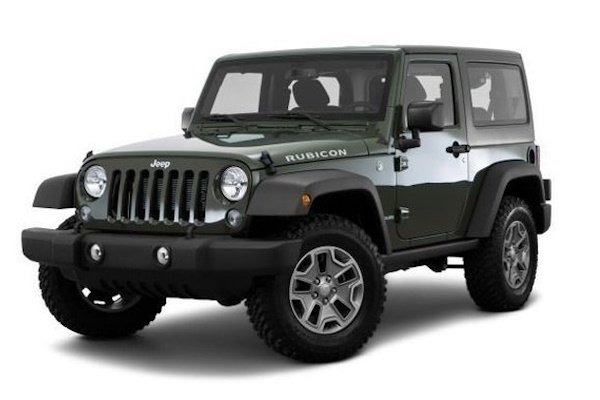
Access to these belts presented additional challenges. The retractors were mounted high on the roll cage, placing them out of easy reach for many passengers, particularly children.
This often required front-seat occupants to assist with retrieving and extending belts for rear passengers, an unnecessary complication that detracted from the vehicle’s usability as family transportation.
During winter months with heavier clothing, the awkward reaching required to access these belts became even more cumbersome. The exposed mounting on the roll cage created further practical problems.
The metal retractor mechanisms and mounting brackets would become extremely hot when exposed to direct sunlight, creating burn risks for unsuspecting passengers.
In cold weather, these same metal components would become uncomfortably cold to touch, making buckling up an unpleasant experience. The exposed positioning also left the components vulnerable to damage during the Wrangler’s intended off-road use, with branches and obstacles occasionally contacting and damaging the mechanisms.
Child safety seat installation suffered particularly under these constraints. The awkward belt path made proper routing through car seat belt guides exceptionally difficult, often resulting in improper installations that could compromise safety.
The fixed anchor points couldn’t accommodate the range of car seat designs on the market, forcing many parents to abandon certain seating positions or purchase specific car seat models just to achieve proper fitment in their Wranglers.
The mounting position also interfered with the Wrangler’s cargo functionality. With the rear seats folded or removed to expand cargo capacity (a common configuration for adventure-focused owners), the belts and retractors protruded into the load area, creating snag points for cargo and reducing usable space.
The metal components were prone to damaging delicate cargo items that came into contact with them during transit. While Jeep incrementally refined this system throughout the JK’s production run, the fundamental limitations imposed by the vehicle’s defining design characteristics remained until the JL redesign in 2018.
This case illustrates the inherent challenges in balancing specialized vehicle capabilities with basic ergonomic considerations, particularly regarding safety systems that require daily interaction from all passengers.
10. Tesla Model X (2015-Present)
The Tesla Model X represents one of the most technologically advanced and innovative vehicles on the market, yet its rear seatbelt mounting configuration demonstrates how even forward-thinking manufacturers can create ergonomic compromises when prioritizing unique design elements.
The issues primarily center around Tesla’s implementation of monopost second-row seats in early production models, which created several practical challenges that affected the everyday usability of the vehicle’s seatbelt system.
Tesla’s decision to mount the second-row seats on single pedestals rather than conventional seat tracks created immediate implications for seatbelt integration.
Without traditional seat structures to house belt components, Tesla engineered a unique solution where seatbelt buckles were mounted directly to the floor alongside each monopost seat base.
This positioning created several functional problems that owners quickly identified after taking delivery of their vehicles. The floor-mounted buckles positioned the receptacle points significantly lower than conventional designs, requiring passengers to reach awkwardly downward and between seat components to locate and secure their belts.
This unnatural movement pattern proved particularly challenging for elderly passengers or those with mobility limitations. The positioning also placed the hard plastic buckle housings where they could contact passengers’ legs or feet during entry and exit, creating both comfort issues and potential trip hazards.
The monopost design created additional challenges regarding belt routing. Without conventional seat structures to guide belt paths, the webbing would often contact and rub against the seat adjustment mechanisms during normal vehicle movement.
This contact accelerated wear on both the belt material and the expensive seat components, with many early owners reporting fraying webbing edges or damaged seat controls after extended use.
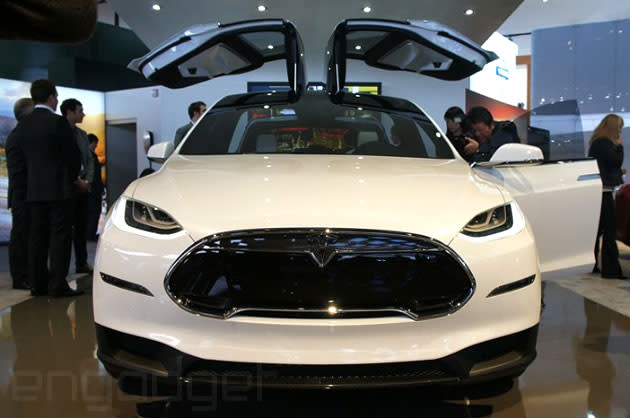
Tesla’s implementation particularly impacted families with children. Parents helping younger children buckle up faced the awkward process of reaching between seat components to locate buckles that were often visually obscured by the seat overhangs.
The positioning made it nearly impossible for children to buckle themselves independently, removing a developmental milestone many parents value as their children grow.
Child safety seat installation became similarly complicated, with the unusual belt geometry creating improper routing paths through many car seat designs.
The Model X’s iconic Falcon Wing doors inadvertently contributed to the problem. When opened in tight parking situations, the limited access space combined with the awkward belt positioning created challenging contortions for passengers attempting to buckle up.
Parents installing children in car seats, particularly those struggling with this combination, often need to adopt uncomfortable positions to reach the low-mounted buckles while working around the door opening constraints.
The belt positioning also proved problematic during the Model X’s “summon” and other automated movement features. The proximity of belts to moving seat components meant occasional instances where unbuckled belts would become caught in adjustment mechanisms during automated processes, creating potential damage to both systems and requiring manual intervention to resolve.
Tesla recognized many of these shortcomings and implemented revisions to later production models, including redesigned second-row seats in 2017 that addressed some of the most significant ergonomic concerns.
However, thousands of early-production vehicles remain on the roads today with the original problematic configuration. This case illustrates how innovative vehicle designs can sometimes create unexpected ergonomic challenges in fundamental safety systems when departing significantly from conventional automotive interior architectures.
Also Read: 5 Cars With Back Seats You Can Sleep On and 5 You Can’t

